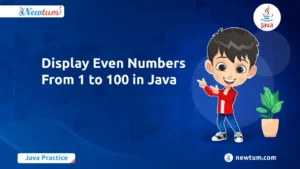C++ Data Types and Variables form the foundation of any successful C++ programming journey. Whether you’re a greenhorn or someone looking to hone your coding skills, understanding these essential elements is crucial. They’re not just about storing values; they’re about crafting efficient, real-life coding solutions. So, why not dive in and demystify the complexities together? With bit-sized tips and practical examples, you’ll soon master C++’s ins and outs like a pro. Keep reading to transform your coding experience!
What Are Variables in C++?
Definition (Simple Explanation):
Variables in C++ are like labeled boxes in memory that store data. You give them a name and assign a value, so the program knows where and what to access during execution.
Example:
int age = 25;
Here, age is a variable that holds the number 25.
Rules for Naming Variables:
- Must begin with a letter (A-Z or a-z) or underscore (_)
- Cannot start with a digit
- Can include letters, digits, and underscores
- No special characters like
@,#, or! - Reserved keywords (like
int,while, etc.) can’t be used as names - C++ is case-sensitive (
Ageandageare different)
Real-Life Analogy:
Think of a school locker with your name on it. The locker (variable) holds your books (data), and the name helps everyone identify which one is yours.
Introduction to C++ Data Types
What Are Data Types and Why They Matter:
Data types tell the compiler what kind of data a variable will store. This helps in managing memory efficiently and ensures proper operations on the data.
Classification of Data Types:
✅ Primitive Data Types – Built-in and simple types:
int,float,char,bool, etc.
✅ Derived Data Types – Formed using primitive types:
- Arrays, pointers, functions, references, etc.
3. Common Data Types in C++ with Examples
| Data Type | Description | Syntax Example | Sample Output | Memory Size (Approx.) | Range (Approx.) |
|---|---|---|---|---|---|
int | Stores integers | int age = 30; | 30 | 4 bytes | -2,147,483,648 to 2,147,483,647 |
float | Stores decimal numbers | float temp = 36.5; | 36.5 | 4 bytes | ~±3.4e-38 to ±3.4e+38 |
double | More precise decimals | double pi = 3.14159; | 3.14159 | 8 bytes | ~±1.7e-308 to ±1.7e+308 |
char | Stores single characters | char grade = 'A'; | A | 1 byte | ASCII values: 0 to 255 |
bool | Stores true or false | bool isPassed = true; | 1 (true) | 1 byte | true (1), false (0) |
Declaring and Initializing Variables in C++
Syntax Overview
To declare a variable, you specify the data type followed by the variable name:
int age; float temperature; char grade;
Multiple Variable Declarations in One Line
You can declare multiple variables of the same type in a single line, separated by commas:
int a, b, c; // All are integers float x = 5.5, y = 10.0; // Float variables with initial values
Initializing Variables with Values
You can assign a value to a variable at the time of declaration:
int count = 10; char letter = 'A'; bool isReady = true;
Type Conversion and Type Casting in C++
Implicit Type Conversion (Type Promotion)
C++ automatically converts a smaller data type to a larger one when necessary. This is called implicit conversion.
int x = 5; float y = x; // int to float conversion (5 becomes 5.0)
Explicit Type Conversion (Type Casting)
You can forcefully convert one type into another using type casting.
float f = 5.75; int i = (int)f; // f becomes 5, decimal part is dropped
Or using C++ style:
int i = static_cast<int>(f);
Common Pitfalls
- Data loss during conversion (e.g., float to int drops decimals)
- Incorrect assumptions about result types in mixed operations
int a = 5; int b = 2; float c = a / b; // Outputs 2.0, not 2.5, because both are ints✅ Fix:float c = (float)a / b; // Outputs 2.5
Understanding C++ Data Types
cpp
#include
int main() {
// Integer data type
int myInt = 100;
// Floating point data type
float myFloat = 5.75;
// Double precision floating point data type
double myDouble = 9.99;
// Character data type
char myChar = 'A';
// Boolean data type
bool myBool = true;
// String object
std::string myString = "Hello, World!";
// Output the variables
std::cout << "Integer: " << myInt << std::endl;
std::cout << "Float: " << myFloat << std::endl;
std::cout << "Double: " << myDouble << std::endl;
std::cout << "Character: " << myChar << std::endl;
std::cout << "Boolean: " << myBool << std::endl;
std::cout << "String: " << myString << std::endl;
return 0;
}
Explanation of the Code
- This code snippet is a simple C++ program that demonstrates variable declaration and initialisation for various data types. It includes both fundamental and a non-fundamental data type, offering a brief overview of how these are used in C++.
- First, the program starts with the required header file `#include `, which is essential for input and output operations in C++. The `int main()` function is the entry point for any C++ program.
- The program then declares variables of different types: `int` for an integer, `float` and `double` for floating-point numbers, `char` for a character, `bool` for a boolean value, and `std::string` for a string of text.
- Each variable is assigned an initial value. The `std::cout` statement prints the name and the value of each variable to the screen, allowing the program to demonstrate different output representations of these data types.
- Lastly, the program returns 0, indicating successful execution.
Output
Integer: 100
Float: 5.75
Double: 9.99
Character: A
Boolean: 1
String: Hello, World
Real-Life Applications of C++ Data Types and Variables
- Automotive Software Development: Many automotive companies, like Tesla, extensively use C++ to program embedded systems in their vehicles. Crucial features such as autopilot and energy management systems rely on C++ data types and variables to process sensor data effectively and ensure a seamless driving experience.
- Banking and Finance Systems: Financial institutions like Barclays employ C++ for their high-frequency trading platforms. C++ data types and variables help these systems handle large volumes of transactions rapidly, maintaining accuracy and performance without missing a beat, which is essential in the fast-paced trading world.
- Game Development: Video game studios, including Ubisoft, use C++ for developing games with complex graphics and real-time performance. Data types and variables in C++ manage everything from rendering massive game worlds to tracking player input and actions, offering an engaging gaming experience.
- Telecommunication Networks: Companies like Nokia use C++ in developing communication protocols for network systems. The use of variables and data types allows for robust data processing, ensuring quick data transmission and minimal latency, which is vital for effective communication services.
Quick C++ Quiz
- What is the size of an int in C++?
A) 2 bytes
B) 4 bytes
C) 8 bytes - Which of the following is a floating-point data type?
A) int
B) char
C) double - How do you declare a variable of type char?
A) char character;
B) character char;
C) Char character; - What is the correct way to assign a value to a variable in C++?
A) int num == 5;
B) int num = 5;
C) num int = 5; - Which data type can store true or false values?
A) int
B) bool
C) float
Imagine writing, running, and testing your C++ code all in a flash with our AI-powered cpp online compiler. It’s designed to streamline your coding experience, offering quick feedback and suggestions. Perfect for beginners and pros alike, this tool makes your coding journey effortless and productive.
Best Practices for Using Variables and Data Types
Naming Conventions
- Use meaningful names:
✅age,price,score
❌a,b1,temp2 - Use camelCase or snake_case consistently:
✅totalMarksortotal_marks - Avoid starting names with numbers or special characters.
Choosing the Right Data Type
- Use
intfor whole numbers (e.g., age, count). - Use
float/doublefor decimal values (e.g., price, temperature). - Use
charfor single characters (e.g., grade, initial). - Use
boolfor true/false values.
Avoiding Uninitialized Variables
Always assign a value before using a variable:
int score; // ❌ Bad: uninitialized score = 90; // ✅ Good: initialized before use
Common Errors and How to Fix Them
Mismatched Data Types
int x = "Hello"; // ❌ Error: assigning string to int
✅ Fix: Use the correct data type.
Overflow and Underflow
int x = 2147483647 + 1; // ❌ Overflow for int
✅ Fix: Use a larger data type like long long.
Uninitialized or Undeclared Variables
int result; cout << result; // ❌ May give garbage output
✅ Fix: Initialize before use: int result = 0;
Summary Table: Quick Reference
| Data Type | Example | Description | Sample Value |
|---|---|---|---|
int | int age; | Whole numbers | 25 |
float | float temp; | Decimal (single precision) | 36.5 |
double | double pi; | Decimal (high precision) | 3.14159 |
char | char grade; | Single character | 'A' |
bool | bool isDone; | True/false | true |
Conclusion
‘C++ Data Types and Variables’ offers rich insights into programming’s foundational elements. Mastering these concepts boosts coding confidence and problem-solving skills. Try it yourself for a rewarding learning experience. For more on programming languages like Java and Python, explore Newtum.
Edited and Compiled by
This article was compiled and edited by @rasikadeshpande, who has over 4 years of experience in writing. She’s passionate about helping beginners understand technical topics in a more interactive way.



